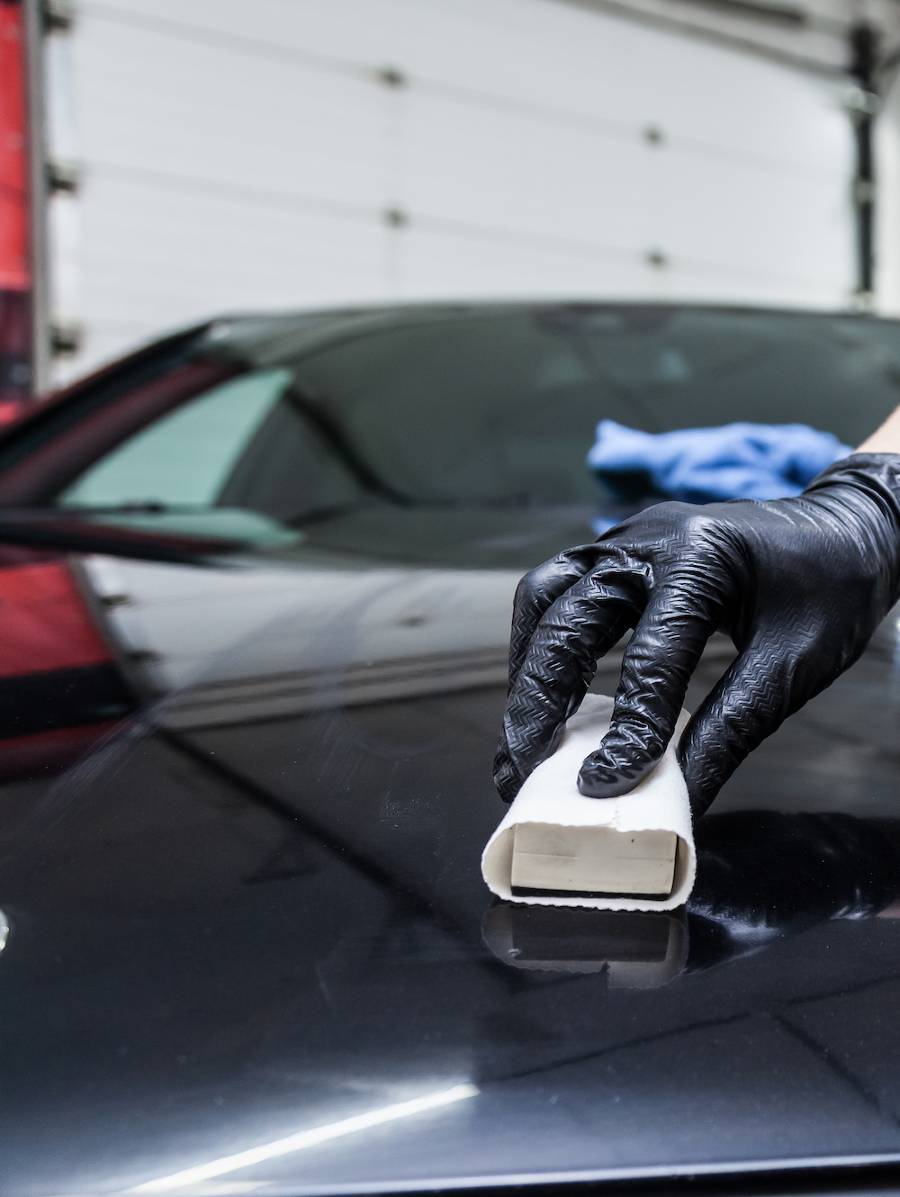Why Ceramic Covering Is the Ultimate Option for a Flawless Finish
Ceramic covering has arised as a leading solution for those looking for a perfect surface for their vehicles, many thanks to its exceptional resilience and safety functions. What aspects absolutely set ceramic finish apart?
What Is Ceramic Layer?

When applied properly, ceramic covering develops a hydrophobic surface area that pushes back water and dirt, making it much easier to cleanse and keep. Unlike traditional waxes or sealants, which generally offer temporary protection, ceramic finishes can last for numerous years, depending on the product quality and application approach. The procedure of using ceramic covering needs thorough prep work, including comprehensive cleansing and occasionally paint improvement, to make sure optimal bonding and effectiveness.
Ceramic coverings are not restricted to auto surfaces; they can likewise be made use of on various materials, including glass, steel, and plastics, supplying a functional solution for enhancing security. Overall, ceramic layer represents a substantial innovation in surface area security technology, combining both visual and functional benefits for a large variety of applications.
Benefits of Ceramic Finishing
While several surface area protection alternatives exist, the benefits of ceramic coating stand out because of its unique properties and durable efficiency. One of the key advantages is its remarkable toughness. Ceramic Coating Philadelphia. Unlike typical wax or sealants that need constant reapplication, ceramic finishes supply a resistant layer that can last for a number of years, dramatically minimizing maintenance initiatives
An additional noteworthy advantage is enhanced security versus ecological pollutants. Ceramic finishings create a hydrophobic surface that drives away water, dirt, and numerous toxins, making it simpler to cleanse. This feature not just maintains the car's appearance yet also decreases the risk of corrosion and oxidation, especially in extreme climate condition.
Moreover, ceramic coatings use superior resistance to UV rays, protecting against fading and destruction of paint over time. This UV protection is vital for maintaining the aesthetic value of automobiles and surfaces subjected to direct sunlight.
Furthermore, the shiny finish achieved with ceramic finish improves the general aesthetic allure, offering surfaces a showroom-quality luster. Generally, ceramic finishings represent a considerable innovation in surface area defense innovation, supplying long-lasting benefits that accommodate both aesthetic and functional demands.
Exactly How It Works
Recognizing the science behind ceramic layers reveals just how they give such exceptional defense and longevity. At its core, a ceramic covering is a liquid polymer that chemically bonds with the lorry's factory paint.
The application procedure entails multiple steps, consisting of surface preparation, which is crucial to attaining optimal adhesion. When applied, the finishing undergoes a healing process, throughout which it hardens and forms a semi-permanent bond with the paint surface area. This bond is what distinguishes ceramic coatings from traditional waxes and sealers, supplying a longer-lasting safety obstacle that can withstand for several years.
In addition, the thickness of the coating can improve its protective high qualities, guaranteeing that it can withstand severe problems. Eventually, the scientific research of ceramic finishings incorporates innovative materials with ingenious application techniques to provide an unequaled level of security and aesthetic enhancement for vehicles.
Comparison With Standard Approaches
The advantages of ceramic coatings become specifically apparent when contrasted to conventional paint defense techniques such as sealants and waxes. While waxes use a short-lived shine, normally lasting a few weeks to a couple of months, ceramic coatings offer a long-lasting protective layer that can withstand for a number of years. This resilience significantly minimizes the regularity of reapplication, making ceramic layers like it a much more cost-efficient service over time.
Additionally, typical techniques typically call for extensive preparation and several applications to accomplish an adequate level of protection. In contrast, ceramic coverings bond at a molecular degree with the automobile's surface, developing a robust guard versus environmental impurities like UV rays, acid rain, and roadway salts. This bond enhances the lorry's resistance to scrapes and swirl marks, which are widespread with traditional waxes and sealants.
In addition, the hydrophobic homes of ceramic coatings push back water and dirt, resulting in simpler cleaning and upkeep. On the other hand, wax and sealant-treated surfaces can attract gunk, requiring even more frequent cleaning - Ceramic Coating Philadelphia. On the whole, ceramic finishings not just supply exceptional defense but likewise supply a more long-lasting and aesthetically attractive surface, developing them as the recommended choice for critical car proprietors
Application and Upkeep Tips

Utilizing a foam applicator, apply the covering in tiny sections, adhering to the manufacturer's standards regarding density and overlap. Enable adequate curing time between layers, commonly 1 day, to guarantee proper bonding. After application, it is critical to stay clear of exposure to water or extreme aspects for at least a week to enable the coating to fully heal.
In addition, using a ceramic upkeep spray can improve the finishing's hydrophobic residential or commercial properties and longevity. Normal inspections for any indications of wear will certainly help preserve the finish's stability and maintain that beautiful coating.
Conclusion
In final thought, ceramic coating emerges as a remarkable alternative for accomplishing a perfect auto finish. Its remarkable toughness, safety high qualities, and hydrophobic properties considerably boost the vehicle's appearance while simplifying maintenance efforts. By developing a durable bond with factory paint, ceramic finishing properly guards versus scrapes, UV rays, and environmental pollutants. With a life expectancy prolonging a check number of years, this sophisticated remedy not just preserves but also elevates the general visual charm of automobiles, making it a cost-effective financial investment for vehicle lovers.
